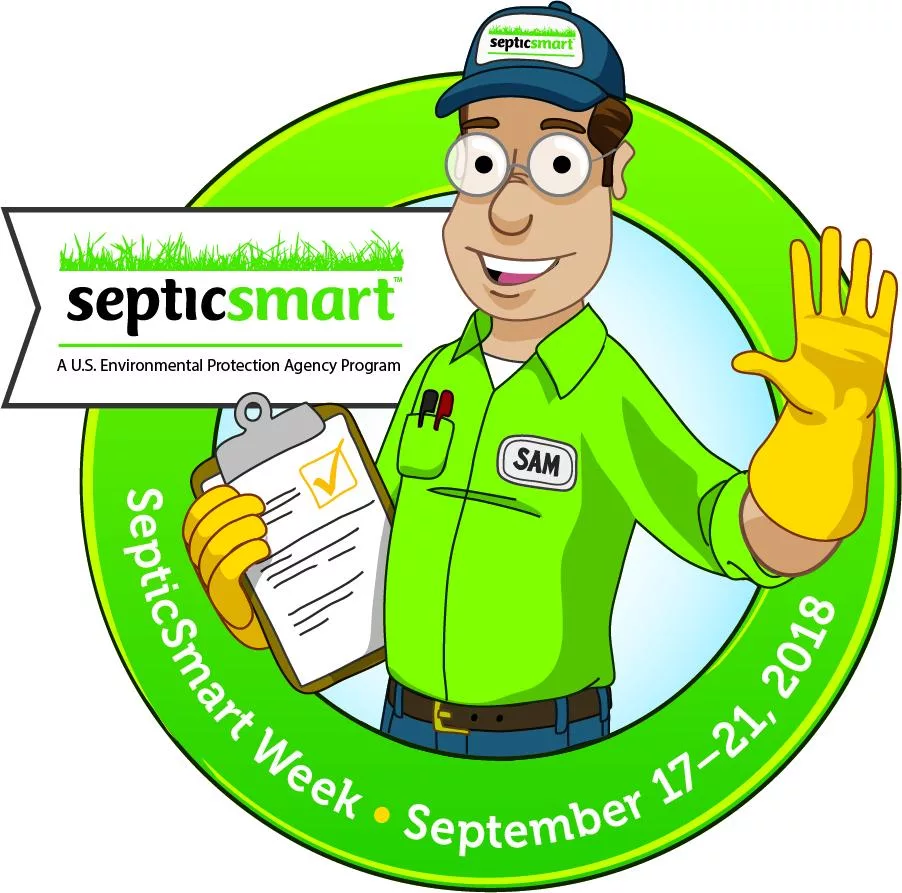
19 Sep How to be Septic-Smart!
Take these tips from the United States Environmental Protection Agency to stay Septic-Smart!
How to Care for Your Septic System
Septic system maintenance is not complicated, and it does not need to be expensive. Upkeep comes down to four key elements:
- Inspect and Pump Frequently
- Use Water Efficiently
- Properly Dispose of Waste
- Maintain Your Drainfield
Inspect and Pump Frequently
The average household septic system should be inspected at least every three years by a septic service professional. Household septic tanks are typically pumped every three to five years. Alternative systems with electrical float switches, pumps, or mechanical components should be inspected more often, generally once a year. A service contract is important since alternative systems have mechanized parts.
Four major factors influence the frequency of septic pumping:
- Household size
- Total wastewater generated
- Volume of solids in wastewater
- Septic tank size
Service provider coming? Here is what you need to know.
When you call a septic service provider, he or she will inspect for leaks and examine the scum and sludge layers in your septic tank.
Keep maintenance records on work performed on your septic system.
Your septic tank includes a T-shaped outlet which prevents sludge and scum from leaving the tank and traveling to the drainfield area. If the bottom of the scum layer is within six inches of the bottom of the outlet, or if the top of the sludge layer is within 12 inches of the outlet, your tank needs to be pumped.
To keep track of when to pump out your tank, write down the sludge and scum levels found by the septic professional.
The service provider should note repairs completed and the tank condition in your system’s service report. If other repairs are recommended, hire a repair person soon.
The National Onsite Wastewater Recycling Association (NOWRA) has a septic locator that makes it easy to find service professionals in your area.
Use Water Efficiently
The average indoor water use in a typical single-family home is nearly 70 gallons per individual, per day. Just a single leaky or running toilet can waste as much as 200 gallons of water per day.
All of the water a household sends down its pipes winds up in its septic system. The more water a household conserves, the less water enters the septic system. Efficient water use improves the operation of a septic system and reduces the risk of failure.
EPA’s WaterSense program has many simple ways to save water and water-efficient products.
- High-efficiency toilets.Toilet use accounts for 25 to 30 percent of household water use. Many older homes have toilets with 3.5- to 5-gallon reservoirs, while newer, high-efficiency toilets use 1.6 gallons of water or less per flush. Replacing existing toilets with high-efficiency models is an easy way to reduce the amount of household water entering your septic system.
- Faucet aerators and high-efficiency showerheads.Faucet aerators, high-efficiency showerheads, and shower flow restrictors help reduce water use and the volume of water entering your septic system.
- Washing machines.Washing small loads of laundry on your washing machine’s large-load cycle wastes water and energy. By selecting the proper load size, you will reduce water waste. If you are unable to select a load size, run only full loads of laundry.Try to spread washing machine use throughout the week. Doing all household laundry in one day might seem like a time-saver; but it can harm your septic system, not allow your septic tank enough time to treat waste, and could flood your drainfield
Clothes washers that bear the ENERGY STAR label use 35 percent less energy and 50 percent less water than standard models. Other Energy Star appliances provide significant energy and water savings.
Properly Dispose of Waste
Whether you flush it down the toilet, grind it in the garbage disposal, or pour it down the sink, shower, or bath, everything that goes down your drains ends up in your septic system. What goes down the drain affects how well your septic system works.
Toilets aren’t trash cans!
Your septic system is not a trash can. An easy rule of thumb: Do not flush anything besides human waste and toilet paper. Never flush:
- Cooking grease or oil
- Flushable wipes
- Photographic solutions
- Feminine hygiene products
- Condoms
- Dental floss
- Diapers
- Cigarette butts
- Coffee grounds
- Cat litter
- Paper towels
- Pharmaceuticals
- Household chemicals like gasoline, oil, pesticides, antifreeze, and paint or paint thinners
Think at the sink!
Your septic system contains a collection of living organisms that digest and treat household waste. Pouring toxins down your drain can kill these organisms and harm your septic system. Whether you are at the kitchen sink, bathtub, or utility sink:
- Avoid chemical drain openers for a clogged drain. Instead, use boiling water or a drain snake.
- Never pour cooking oil or grease down the drain.
- Never pour oil-based paints, solvents, or large volumes of toxic cleaners down the drain. Even latex paint waste should be minimized.
- Eliminate or limit the use of a garbage disposal. This will significantly reduce the amount of fats, grease, and solids that enter your septic tank and ultimately clog its drainfield.


Sorry, the comment form is closed at this time.